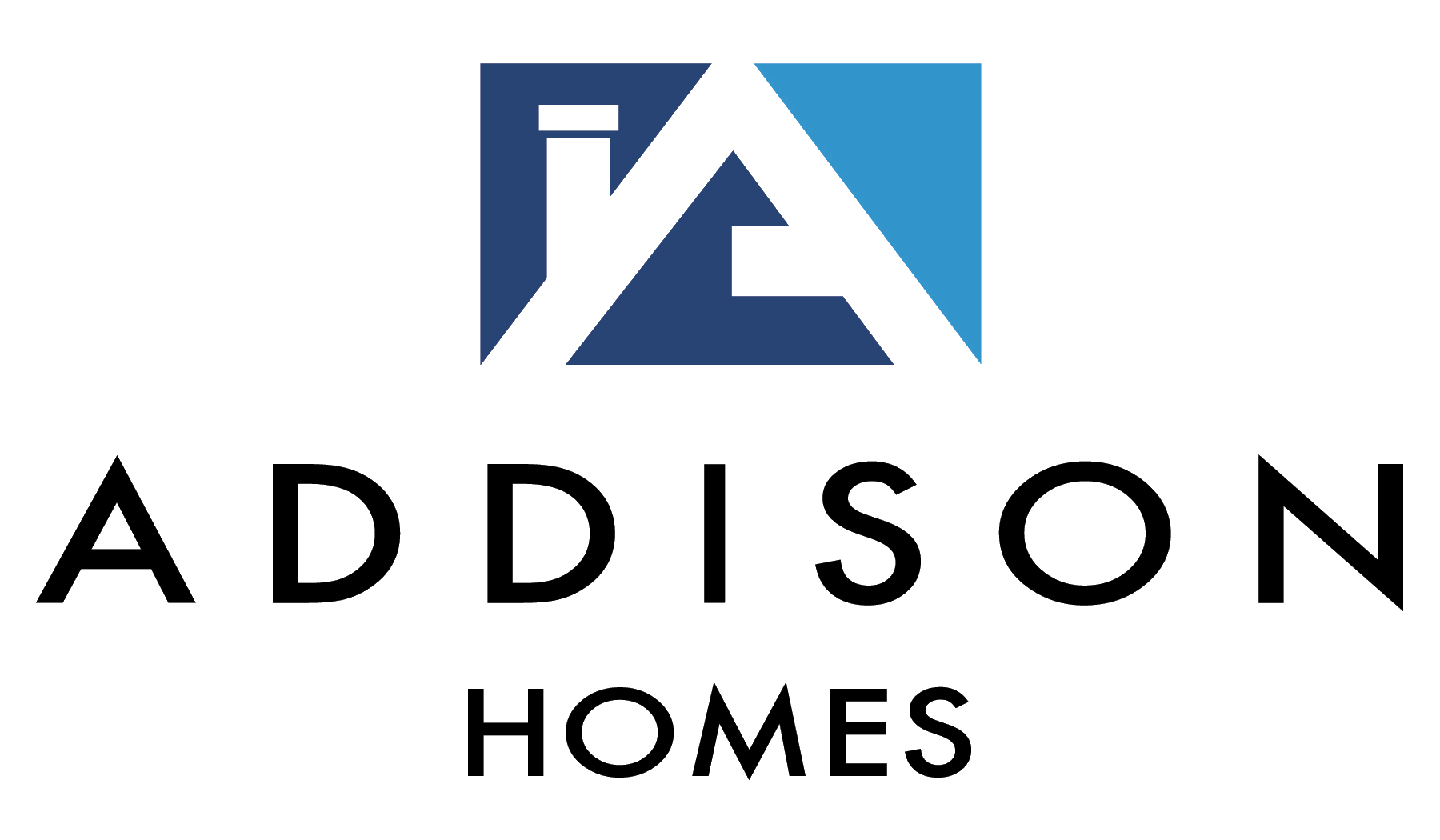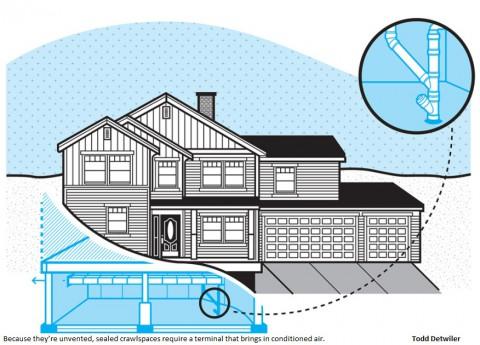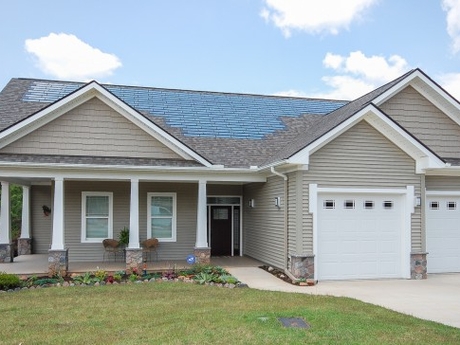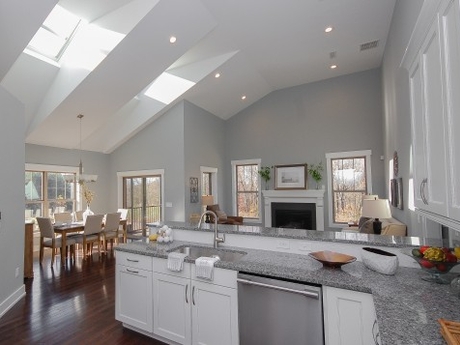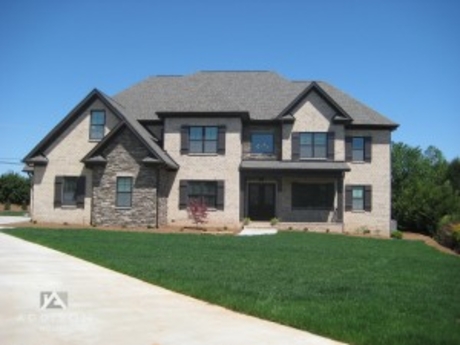- Our Building Philosophy
- Our Process
- Home Plans
- Our Work
- Reviews & Awards
June 3, 2016
BUILDER recently published “Five Alternative Construction Methods,” a series of articles by reporter Drew Vass looking at “building methods that are gaining traction because they save time, money, and headaches — or all of the above — while producing better results and more energy savings.”
The story titled “Why Closed Crawlspaces Make Sense” quotes Addison Homes’ expertise on the best practice of building sealed crawlspaces.
Sealed, conditioned foundations are a standard feature on Addison homes. Here’s the BUILDER article:
WHY CLOSED CRAWLSPACES MAKE SENSE
In many regions, sealed crawlspaces are an underutilized best practice.
By Drew Vass
While foundation vents are supposed to prevent crawlspaces from developing moisture issues, over the course of a couple of centuries of home building, it’s become apparent that this theory doesn’t always hold up. But smart builders have found a way to avoid the callbacks, discomfort, and energy loss that come with damp, humid crawlspaces; these days, of the 15% to 20% of U.S. homes that are constructed with crawlspaces, one-third are now unvented.
A report published in 2013 by the Department of Energy’s Building America Solution Center comparing 12 new homes — four with vented crawlspaces and eight with sealed and conditioned crawlspaces — showed a 15% to 18% reduction in heating- and cooling-related energy consumption with the sealed models. Some of those offsets are associated with routing ductwork through a conditioned air space. Other benefits include a 20% reduction in crawlspace humidity.
Sealed crawlspaces achieve these benefits by completely sealing the ground floor with a minimum 6-mil air and moisture barrier, along with sealing and insulating the foundation and perimeter framing and an air-tight access panel. Experts also suggest adding a conditioned air supply with back-feed dampers (but no returns). Other requirements include a 4-inch threshold at access doors and a gap along the top portion of perimeter foundation walls to facilitate inspections for insects.
“From my perspective, as a builder, there’s a degree of liability protection [in sealed crawlspaces],” explains Todd Usher, president of Greer, S.C.–based Addison Homes. “In certain areas, it isn’t a question of when vented crawlspaces will get mold and mildew, but how soon.”
In the years before founding his building company, Usher worked as a home inspector, where he says he found moisture issues in 99.9% of crawlspaces. As a result, for approximately the past six years, he has made sealed crawlspaces a standard feature on his homes, which he says adds roughly $2.50 per square foot of crawlspace.
Latest Blog Posts
DOE’S HOUSING INNOVATION AWARDS PROGRAM RECOGNIZES NATION’S TOP BUILDERS ON THE PATH TO ZERO ENERGY READY HOMESTwo Addison Homes projects have earned 2016 Housing Innovation Awards from the U.S.... Read more
Addison Homes won the Southern Home & Garden Bridge Award for Green Building for the third consecutive year.This award-winning green home enjoys a savvy-yet-simple aesthetic – neutral palette,... Read more
We are pleased to announce that Addison Homes has received a 2015 Housing Innovation Award from the U.S. Department of Energy. A new home builder in Greenville and Upstate SC, we are being recognized... Read more
